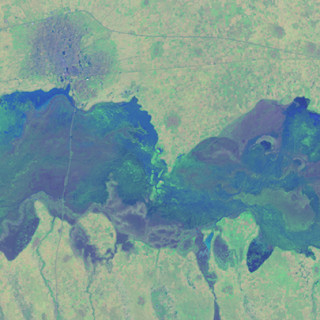Improving climate models to reduce vulnerability
Africa is very vulnerable to climate change. However, challenges remain in understanding the full set of climate impacts for the region. Improved climate models may help contribute to solutions for reducing vulnerability. A step in the right direction, according to the researchers Minchao Wu and Markku Rummukainen, is to incorporate into todays climate models how regional ecosystems are affected by, and affect, the climate.
The different climate models of today project different outcomes regarding the effect of climate change on African ecosystems. Some models suggest that tropical rainforests serve as carbon sinks; other models that they become future carbon sources. One reason for this uncertainty, apart from the lack of historical climate data for the region, is that the interaction between ecosystems and climate change is not yet included in many models.
Climate researchers Minchao Wu and Markku Rummukainen are working on a climate model to project future climate changes in Africa, including the role and consequences of changes in the vegetation.
“In our model, vegetation is allowed to react to climate change, rather than being constant as in many other climate models. Future changes in the climate and vegetation can be studied in a more realistic way when we allow the impact from changes in the vegetation to feed back on the climate”, said Minchao Wu.
Their model shows that an increase in rainfall in coastal monsoon areas, such as West and East Africa, and in parts of the Saharan regions, together with increased carbon dioxide concentration in the atmosphere, may stimulate vegetation growth.
“If we were to stop here and look at the model results, the net effect would be an increase in carbon uptake”, said Minchao Wu.
However, when including the fact that an increase in water evaporation (caused by changes in vegetation due to climate change) will cool the surface climate in areas such as savannahs and arid land, preliminary results from the model show a different outcome. The local cooling effects will lead to less rainfall over the tropical rainforests in central Africa because of induced changes in wind systems, and subsequently, the dry season there will become even drier. This would make the rainforest more prone to turn into savannahs, with less carbon uptake as a result.
“We hope that this work will contribute to the understanding of climate change in Africa, and the consequences on a local, regional and global scale”, said Minchao Wu.
Text: Pia Romare
Facts
-
Carbon sink/carbon source
-
Carbon sink/carbon source: if an ecosystem absorbs more carbon dioxide from the atmosphere than it releases, it serves as a “carbon sink”, and if it releases more carbon dioxide than it absorbs, it serves as a “carbon source”.
-
African ecosystems and their interaction with the climate
-
African ecosystems and their interaction with the climate
The vulnerability of African ecosystems is determined by their sensitivity to climate change as well as to changes in land use. In some ecosystems, vegetation may already react to relatively minor environmental disturbances, such as slight changes in the amount of rainfall. Savannahs, for example, quickly become greener when it starts to rain, and browner when they become dry. A persistent increase in rainfall over savannahs leads to more forests in such areas, but during drought even rainforests may experience a widespread “browning”. Such changes in the vegetation can influence the ability of ecosystems to absorb carbon dioxide in the atmosphere.
Vegetation does not merely adapt to the climate, but also has a significant impact on it, with both local and remote effects. Changes in vegetation can lead to changes in climate, which in turn may lead back to changes in vegetation, creating a climate feedback loop. One local effect is that vegetation that pumps water out from the soil into the atmosphere through transpiration, cools the surface climate – usually seen in arid and tropical areas of Africa. This local effect may in turn have an impact on large-scale energy balances and atmospheric circulation (i.e. wind systems). Such effects may spread to more remote regions as well.





